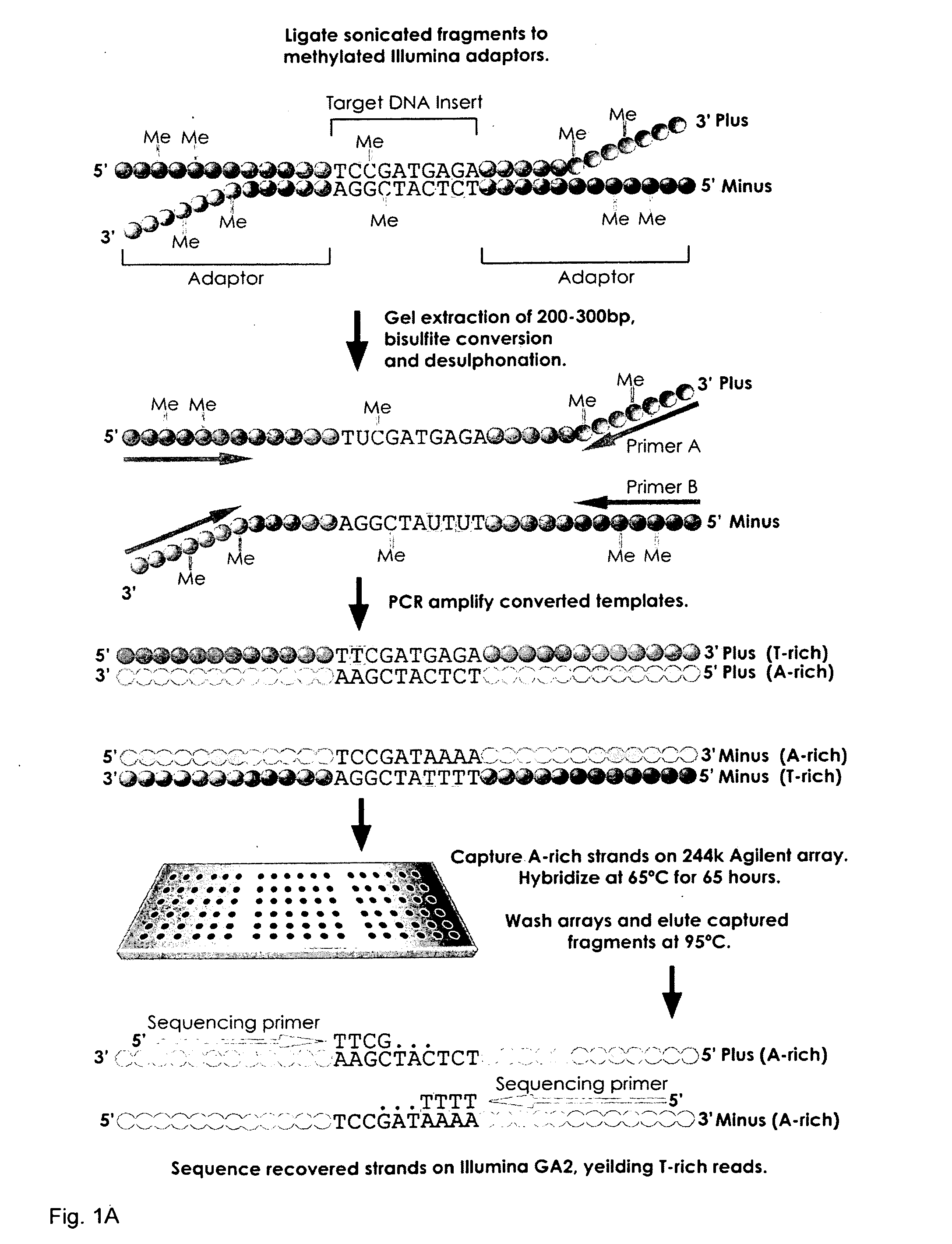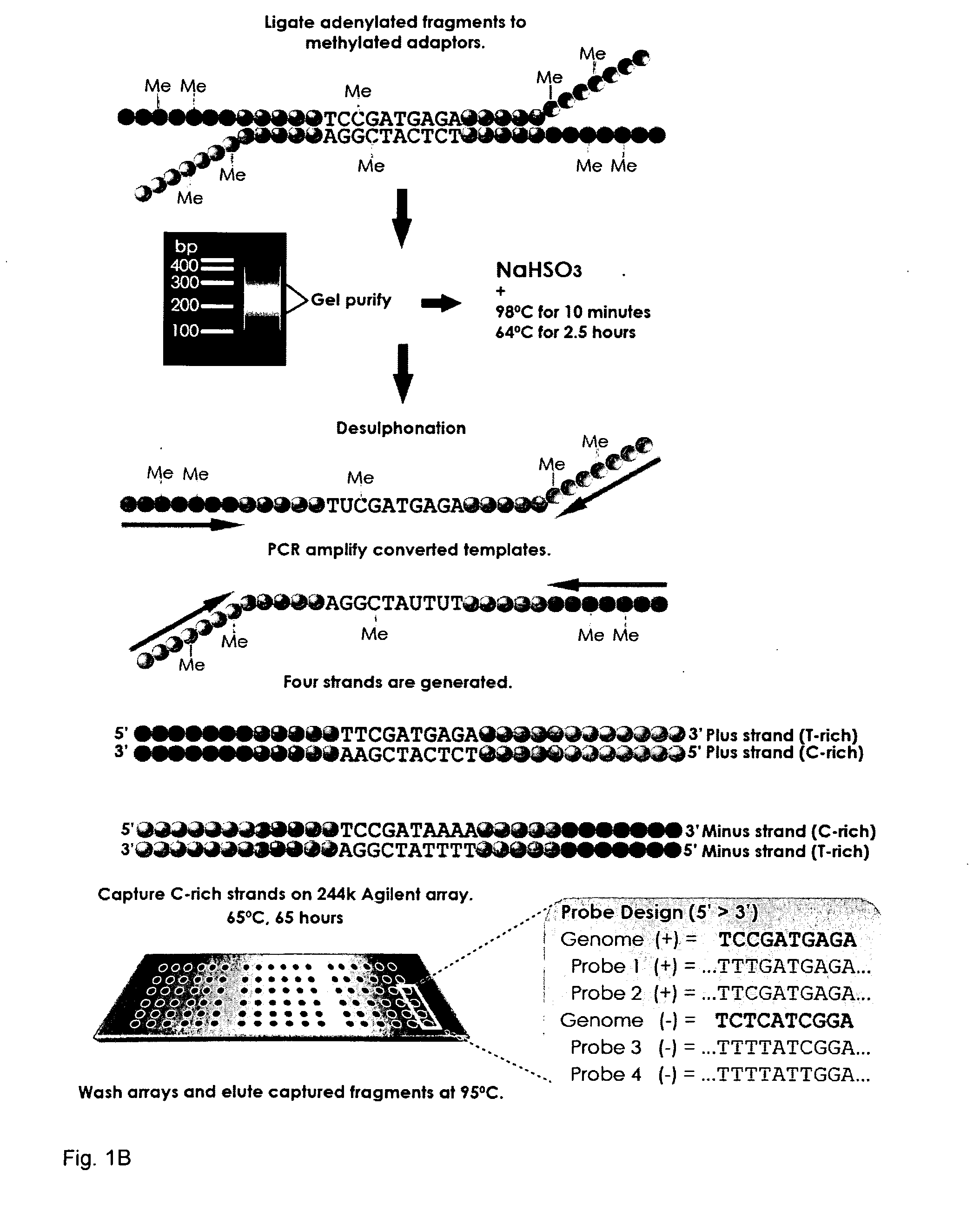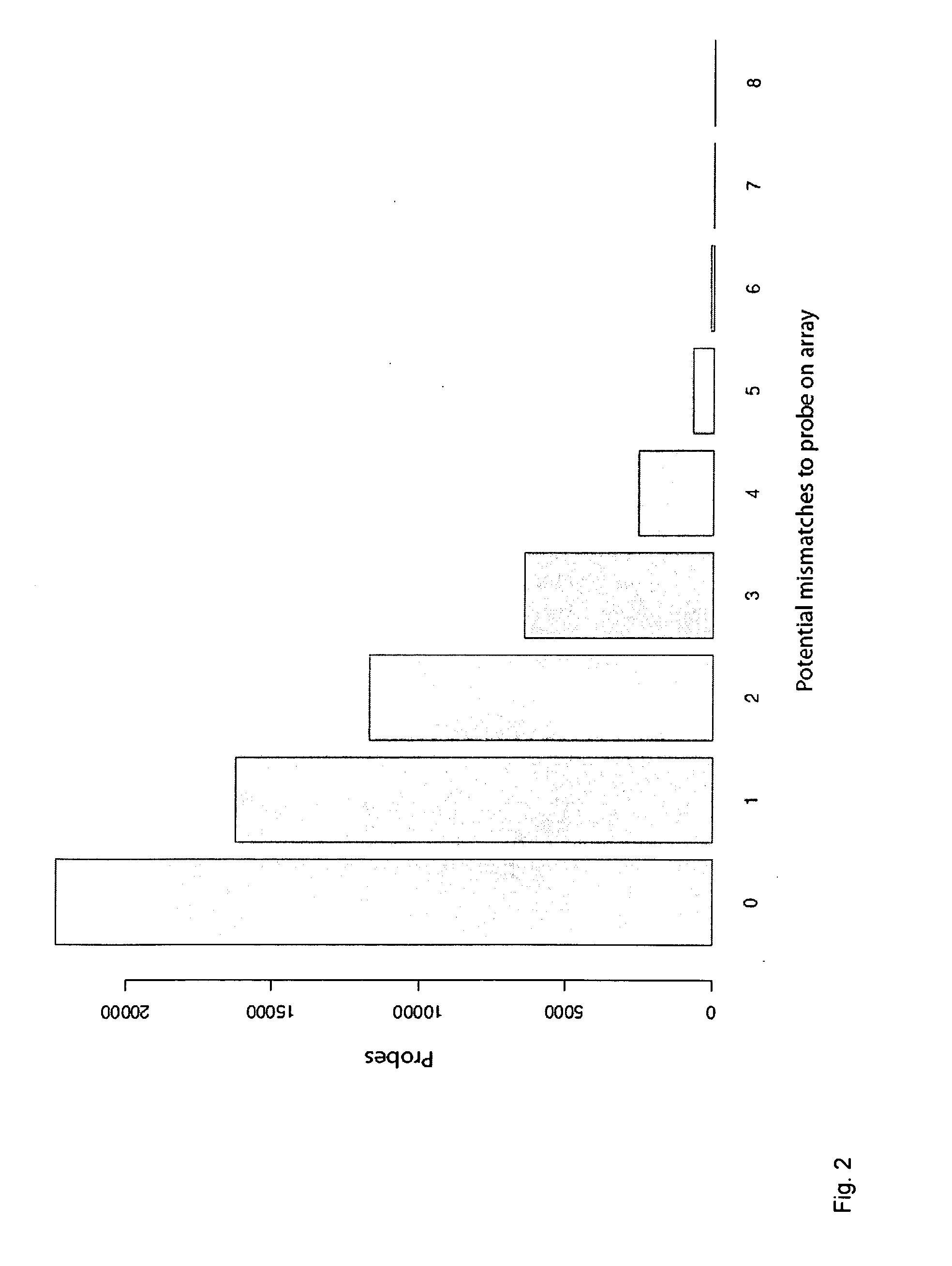Methods and arrays for profiling DNA methylation
- Summary
- Abstract
- Description
- Claims
- Application Information
AI Technical Summary
Problems solved by technology
Method used
Image
Examples
example 1
[0193]Genomic DNA libraries were generated as described with a few important modifications. Briefly, purified cell line DNA was randomly fragmented by sonication. Alternatively, DNA maybe randomly fragmented using methods such as enzymatic shearing or nebulization. Fragmented DNA was subsequently treated with a mixture of T4 DNA Polymerase, E. coli DNA polymerase I Klenow fragment, and T4 polynucleotide kinase to repair, blunt and phosphorylate ends according to the manufacturer's instructions (Illumina®). The repaired DNA fragments were subsequently 3′ adenylated using Klenow exo-fragment (Illumina®). After each step, the DNA was recovered using the QIAquick peR Purification kit (Qiagen®). Adenylated fragments were ligated to Illumina®-compatible paired-end adaptors, synthesized with 5′-methyl-cytosine instead of cytosine (Illumina®). These adapters enable cluster generation on the sequencer, the substitution of 5′-methyl-cytosine protects the adapters from bisulfite conversion, wh...
example 2
[0197]Following size selection and gel purification, the adapter-ligated DNA was divided into two separate reactions to ensure optimal DNA concentration for subsequent cytosine conversion reactions. Fragments were denatured and treated with sodium bisulfite using the EZ DNA Methylation-Gold Kit™ according to the manufacturer's instructions (Zyme). Lastly, the sample was desulfonated and the converted. Alternatively bisulfite treatment can be performed with a bisulfite, a disulfite or a hydrogensulfite compound.
c. PCR Amplification of Bisulfite Converted DNA
[0198]The primary ligated material was bisulfite converted and amplified using common primer sequences present on the adapters. Amplification of the bisulfite treated DNA results in the formation of a complementary strand, the sequence of which is dependant on the methylation status of the genomic sample, and is thus unique from the original pre-bisulfite treated complementary strand. The bisulfite treatment and subsequent amplifi...
example 3
[0200]The converted, adaptor-ligated fragments were PCR enriched using paired-end adaptor-compatible primers 1.0 and 2.0 (Illumina®) and Expand High FidelityPLUS PCR System (Roche®), a specialized polymerase capable of amplifying the highly denatured, uracil-rich templates, which can sometimes be problematic.
d. CpG Island Array Capture of Bisulfite Treated DNA
[0201]Among relevant targets of DNA methylation in mammalian genomes are the CpG islands, defined for annotation in the UCSC browser (http: / / genome.ucsc.edu) as a sequence of >200 bp with a GC content greater than 50% and with significant enrichment in CpG dinucleotides [28]. Of the more than 28,000 annotated CpG islands, 324 randomly selected examples were used in the study ranging from approximately 300 to 2000 bp in size representing 258,895 bases of genomic space and 25,000 CpG sites (−0.1% of all CpG sites in the genome). The set was distributed among all autosomes and chromosome X, including 170 islands located within 150...
PUM
| Property | Measurement | Unit |
|---|---|---|
| Fraction | aaaaa | aaaaa |
| Fraction | aaaaa | aaaaa |
| Fraction | aaaaa | aaaaa |
Abstract
Description
Claims
Application Information
 Login to View More
Login to View More - R&D
- Intellectual Property
- Life Sciences
- Materials
- Tech Scout
- Unparalleled Data Quality
- Higher Quality Content
- 60% Fewer Hallucinations
Browse by: Latest US Patents, China's latest patents, Technical Efficacy Thesaurus, Application Domain, Technology Topic, Popular Technical Reports.
© 2025 PatSnap. All rights reserved.Legal|Privacy policy|Modern Slavery Act Transparency Statement|Sitemap|About US| Contact US: help@patsnap.com



